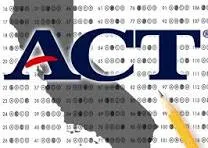After nearly a decade of using the SAT, high school students in Illinois are now preparing to take the ACT as their primary standardized test for college admission.
The SAT featured two main sections: a combined reading and writing section, alongside a math portion. In contrast, the ACT separates reading and writing into two distinct sections and includes both math and science components.
Students will need to adapt to the ACT’s faster pace, as they have less time to answer each question. The ACT consists of 215 questions to be completed in 2 hours and 55 minutes, giving test-takers just over one minute per question, which demands quick thinking and efficiency.
Since 2017, students, staff, and parents have been accustomed to the SAT’s 400-1600 point grading scale. The ACT, however, uses a scoring range of 0-36, which may create confusion for those trying to compare their scores to previous practice tests.
In addition to the academic pressure of adapting to a new standardized test, students are also grappling with the mental health challenges that accompany this transition.
Despite the changes, one piece of advice remains consistent from the SAT era: students should prioritize a good breakfast and a restful night’s sleep to help them feel prepared for the exam.
High school students are scheduled to take the ACT next month.

Comments